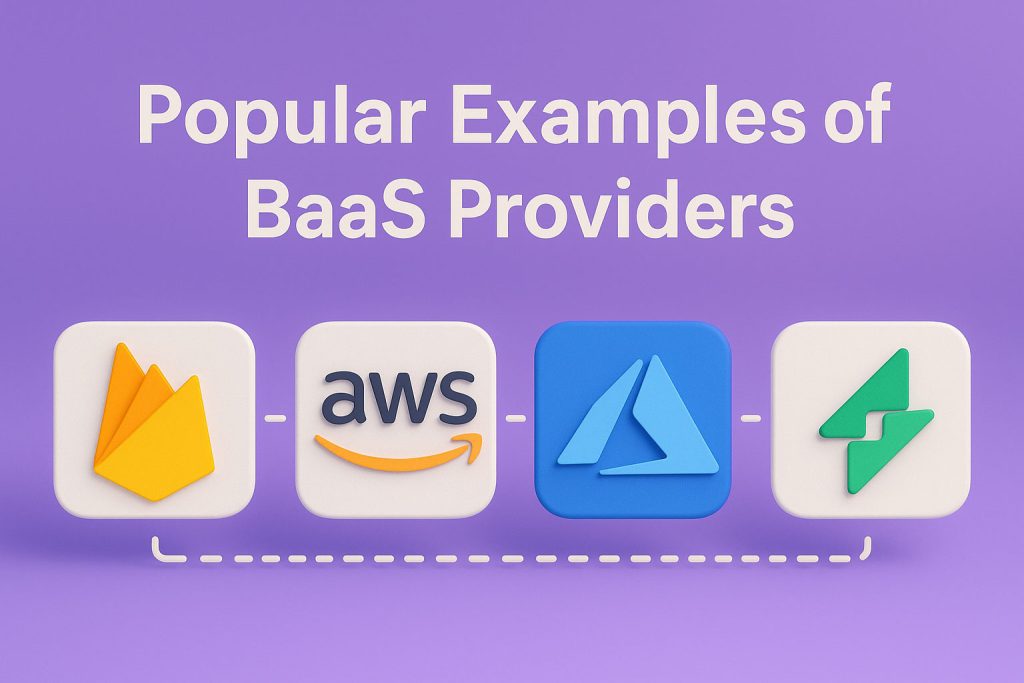In the fast-paced world of app development, building a robust backend from scratch can feel like reinventing the wheel. That’s where Backend as a Service (BaaS) steps in, offering a smarter, faster, and more scalable solution.
Whether you’re a startup racing against time or an enterprise scaling your apps globally, BaaS simplifies backend development so you can focus more on what matters: building amazing user experiences.
In this blog, we’ll humanly unpack what BaaS is, its key benefits, real-world examples, and why it’s becoming an essential part of modern software development.
What is Backend as a Service (BaaS)?
Backend as a Service (BaaS) is a cloud-based solution that provides developers with ready-to-use backend functionalities like databases, authentication, hosting, cloud storage, APIs, and serverless computing. Instead of writing backend code and managing servers manually, developers integrate these services through simple APIs and SDKs.
Think of BaaS as your app’s “behind-the-scenes” powerhouse, taking care of all the complex backend processes while you concentrate on frontend development.
Simply put:
How Does Backend as a Service (BaaS) Work?
Imagine you’re building a fitness tracking app. Traditionally, you would need to:
- Set up servers
- Manage user authentication
- Build cloud storage solutions
- Create APIs for user data
- Set up real-time notifications
- Handle security and compliance
With BaaS, you can skip all these tedious steps. Instead, you:
- Choose a BaaS provider
- Integrate their SDKs into your app
- Use ready-made features like login, file storage, and real-time database
The provider manages the infrastructure, scalability, security, and updates behind the scenes. You just focus on designing a great app!
Key Features of Backend as a Service (BaaS)
- Authentication: User sign-up, login, password resets
- Database Management: Real-time or traditional database integration
- Cloud Storage: Upload and manage files like images and videos
- Push Notifications: Send instant alerts to users
- APIs and SDKs: Pre-built tools to connect backend services
- Serverless Functions: Execute backend code without managing servers
- Analytics: Track user behavior and app performance
Benefits of Using BaaS
- Faster Development
You can launch apps quicker by integrating backend services instead of building them from scratch. - Lower Development Costs
No need to hire large backend teams or invest heavily in infrastructure. - Scalability Out of the Box
Your app can handle millions of users effortlessly because the BaaS provider handles scaling. - Focus on Core Features
Spend your time innovating on the user experience, not reinventing backend essentials. - Enhanced Security
Leading BaaS providers offer robust security features like encryption, role-based access, and GDPR compliance.

Popular Examples of BaaS Providers
Here are some popular BaaS providers you might have already heard of:
1. Firebase (by Google)
- Real-time database
- Authentication services
- Cloud functions
- Analytics
- Push notifications
Use case: Startups use Firebase to prototype and scale without backend overhead.
2. AWS Amplify
- Full-stack backend management
- Authentication
- GraphQL & REST APIs
- File storage with Amazon S3
Use case: Apps requiring deep AWS integration opt for Amplify.
3. Backendless
- Visual app development tools
- User management
- Real-time database
- Messaging services
Use case: Ideal for non-technical teams and low-code environments.
4. Supabase
- Open-source alternative to Firebase
- SQL-based database (PostgreSQL)
- Authentication and API generation
Use case: Developers preferring open-source and SQL-based architecture.
When Should You Use BaaS?
- Startups and MVPs: When speed to market is critical
- Mobile Apps: For apps requiring user login, cloud storage, and real-time updates
- Prototypes: Quickly build and test app ideas
- Enterprise Apps: For projects needing fast scalability without extensive backend management
However, if you have highly specialized backend requirements or strict compliance needs, a custom backend might still be the better choice.
Final Thoughts
Backend as a Service (BaaS) is more than a trend—it’s a smart evolution in how modern apps are built. By offloading the heavy lifting of backend development to reliable providers, developers can move faster, focus on innovation, and scale effortlessly.
Whether you’re building the next big social media platform or a niche business app, considering a BaaS solution could be a game-changer.
Ready to take your app idea from dream to reality? Maybe BaaS is the secret weapon you need.





